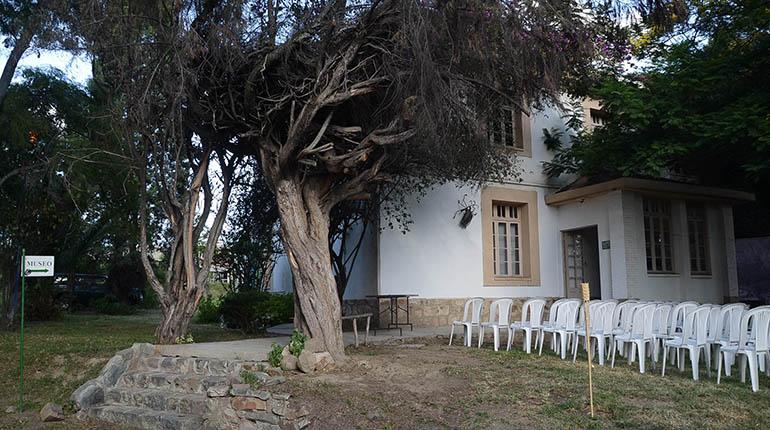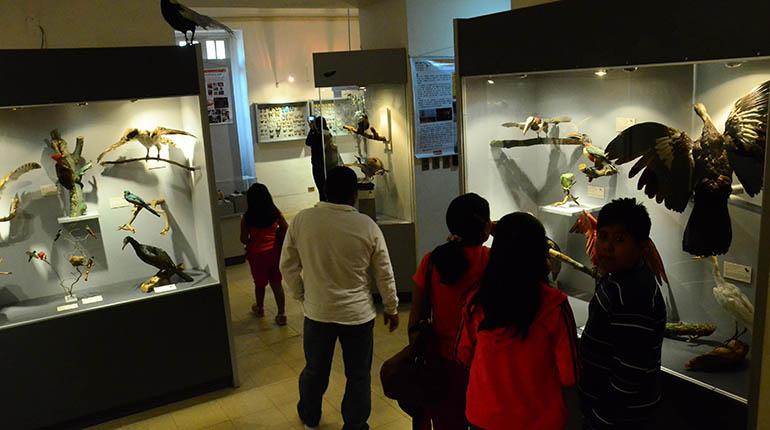RIO DE JANEIRO, BRAZIL – The city of Cochabamba is growing year after year, so concrete constructions are advancing in what used to be rural areas. Finding a free square meter in the urban center is increasingly difficult.
For this reason, the mayor’s office of Manfred Reyes Villa has set its sights on the Alcide D’Orbigny Museum of Natural Sciences in the wealthy neighborhood of La Recolecta, intending to build an exclusive convention center there.
The museum, housed in an old mansion, is surrounded by 9,000 square meters of forest, home to 35 species of trees and 40 kinds of birds, which are increasingly rare in this city.
But the initiative of the opponent Reyes Villa has obstacles: one is in law 593, which declared the building “Material Cultural Heritage of the Plurinational State of Bolivia”.
The museum’s director, Ricardo Céspedes, told Sputnik that the law refers to the same address where it currently operates. He reflected that if they wanted to move them, as the Mayor’s Office proposes, the regulation would first have to be repealed.

The Alcide D’Orbigny Museum has the support of several organizations from Cochabamba, which oppose the transfer of thousands of bones and objects on display and hundreds of frogs that they care for to -someday- reinsert them in their original environments.
A WALK THROUGH HISTORY
Céspedes, a professional geologist and anthropologist, guided Sputnik through the building and its surroundings. Even though the busy America Avenue is just a few steps away, the museum seems to be in the countryside, where you can only hear the birds singing and see the green of trees and plants, grown thanks to the rains that abound at this time of the year.
At the house entrance, which dates from 1900, Céspedes pointed out a part of the roof that is falling apart. The director commented that he had contacted the mayor’s office to ask them to come and repair it. Instead, he learned of plans to move the museum. “As a result of that (the broken roof), we found out that the Mayor’s Office wanted to move us. If not, we wouldn’t have noticed. It is a lack of courtesy,” he said.
As soon as one crosses the door of the large house, photos and texts appear referring to Alcide D’Orbigny, the French naturalist who, between 1830 and 1833, studied the present and past fauna of Bolivia.
“During those three years, he wrote one of his 12 volumes of his Journey to South America, dedicated exclusively to Bolivia,” he explained.
The museum rooms tell a story: “We have selected to show when Bolivia was sea, when the first islands began to appear, then the continent appeared, when the Andes mountain range was formed…”.
With pride, Céspedes showed a stone in the shape of a flapping fish. It looks like a sculpture: “One of the most important pieces is the Sacabambaspis janvieri, which was the oldest fish in the world for four years, 470 million years old. Today, it is the oldest in Australia,” he commented.
The museum exhibits a collection of dinosaur bones that go back to their extinction 65 million years ago. It also has the bones of the first mammals. Many remains were found in Tiupampa, in the department of Cochabamba. The tour concludes with birds, insects, and animals still alive today.

THE PROTECTION OF FROGS
With the support of the United Nations Development Program (UNDP), the Alcide D’Orbigny Museum has a project to conserve the giant frog of Lake Titicaca, shared by Peru and Bolivia.
Céspedes showed the containers set up as laboratories where the frogs live. They are permanently monitored, especially their temperature -they always have the air conditioning on-, the quality of the water and their food -insects that are raised in an aseptic environment in the building-.
In this Bolivian Center for the Conservation of Threatened Amphibians, “lives the world-famous Romeo, one of the last specimens of Telmatobius yuracare. We know that the frogs are in danger of extinction, so the museum dedicates a lot of effort to their conservation,” said Céspedes.
Romeo was alone for ten years until, in 2019, Juliet was found, and they were reunited. Then two more individuals appeared, but none of the four wished to reproduce. “Maybe we’re going to use in vitro programs. We are going to see how we can repopulate a community with these specimens,” said the director.
Céspedes commented that the frogs are affected by climate change and a fungus that has decimated hundreds of amphibian species around the world: chytrid. It is the cause of chytridiomycosis, a disease that affects the frogs’ skin, preventing them from breathing and even drowning them.
THE CONFLICT WITH THE MAYOR’S OFFICE
Céspedes commented that the Mayor’s Office ceded the land to locate the museum 24 years ago. “But we don’t have a single official from the Mayor’s Office. The only thing [the Mayor’s Office] has done is to pay for electricity and water”.
The Universidad Mayor de San Simón (UMSS) supports scientific research, in which Céspedes and several other specialists work. The museum also has a foundation, which “generates funds for scientific research projects,” he said.
Although Reyes Villa wants to move forward with his project, “the museum, both the building and all its components, interior and assets, were declared patrimony of the Plurinational State under law 593”, warned Céspedes.
This regulation “obliges the Ministry of Cultures, the Government of Cochabamba, and the municipal Mayor’s Office to protect and collaborate in the development of this institution,” he said.
Despite this, the Mayor’s Office intends to “destroy not only the museum but also the vegetation, which is very important”.
He considered that the officials of the Mayor’s Office “do not know both the laws and the importance of the museum and the property, which is a lung for Cochabamba”. For the director, “the population has to understand that we do science, not politics. Therefore, science and culture must prevail over the petty interests of politics”.
And he emphasized: “The museum should be an activity for everyone. If they build a convention center, it will be restricted to those who can pay or enter. That will not benefit those who visit us from rural areas”.
In any case, Céspedes judged that “there is nothing to discuss here. The problem is to respect the law. In that law is the obligation of the Mayor’s Office to cooperate. If they continue with this attitude, they are disregarding the law. They should rather help us, instead of depriving us of this space”.
Fortunately, the museum has the support of the city’s population, which has just published a manifesto in its defense.
The Ministry of Cultures also showed interest in knowing what was going on by sending a note to the Mayor’s Office to learn about its convention center project. They reminded Reyes Villa that the museum is protected by law in the same document.
With information from Sputnik

